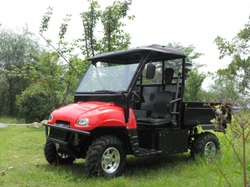|
Last week, Mercedes-Benz unveiled a demonstration truck in Stuttgart that shows the sorts of things it expects to be selling in the year 2025. The truck sports radical LED lighting, a sleek and aerodynamic design, radar and camera systems to help the thing drive itself—at least on highways.
Mercedes also plants a human being firmly behind the wheel, just in case. The company has long been adamant about the continuing need to keep drivers as backup for robotics and vice-versa. In this view of automated driving, the point is to economise on fuel, improve safety, and give the driver a bit of rest—just not so much that he tunes out altogether. So, while the accompanying video shows the driver’s chair swinging to one side as its occupant leans back to sight-see, it emphasises that checking out is not an option: In Mercedes’ take, the driver, far from being “deskilled,” will rather be empowered. “It is conceivable that the driver will be able to take on tasks previously performed by the scheduling team or which provide social contact,” the company says in a press release. “Owner-driver businesses in particular will be able to perform office tasks conveniently on the move if required.” One problem with this vision, which the car maker does not address, is the cost of it all. In February, Daimler engineer Jens Desens explained that the market for trucks was very different from that for cars. Fleet operators cared mainly about the bottom line, he explained. Some even go so far as to refuse to pay for such fripperies as air conditioning. From the look and feel of the company’s promotional video, Future Truck 2025 is fit for a rock star and his entourage, with comfy chairs and beautiful appointments. And that’s the relatively cheap stuff. Who will pay for a robotic chauffeur that doesn’t even replace the driver?
0 Comments
Leave a Reply. |
Categories
All
Archives
December 2019
|


 RSS Feed
RSS Feed
